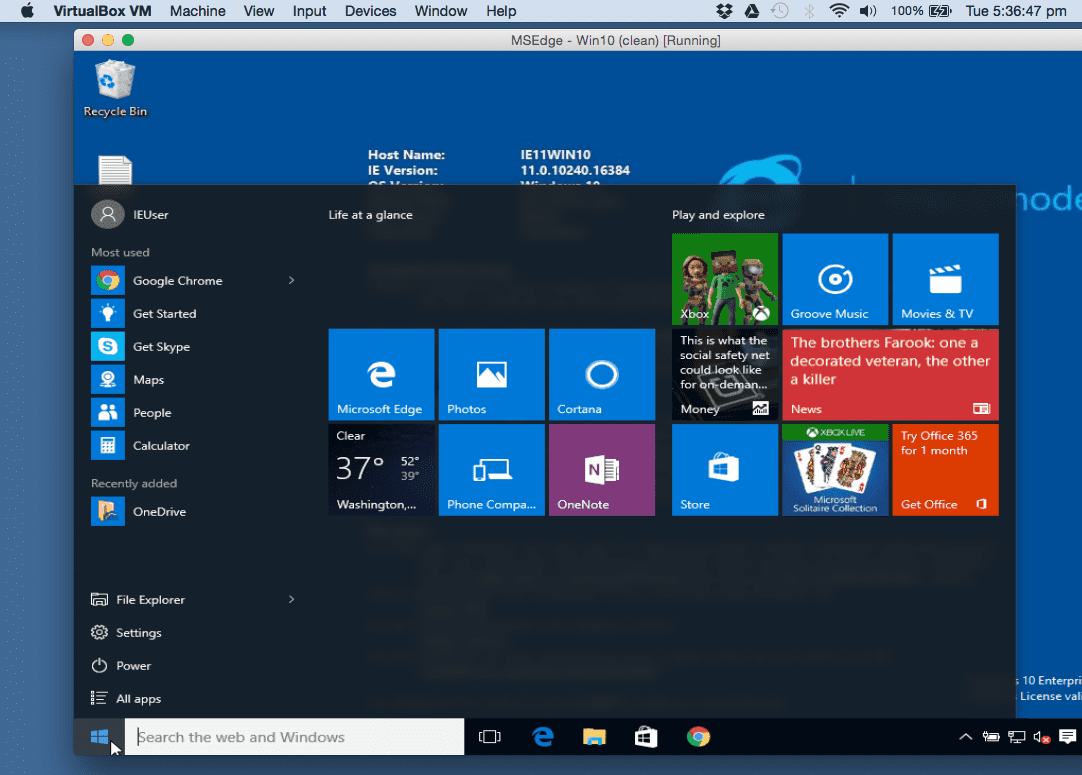
Internet Explorer 11 is the latest web browser from Microsoft for Windows computers, but those who use OS X on a Mac won’t be able to use it! However, if you want to download Internet Explorer for Mac, then there’s a an easy and effective way to do just that in a few steps. Step 1: Install on your Mac the Remote Desktop application from Microsoft. Step 2: Open the website remote.modern.ie, log in using your @hotmail, @live or @outlook account. Access to the service is completely free. Step 3: Select the server which is the closest to you. Step 4: On the Mac.

Back at Build 2019, Microsoft announced IE Mode for Microsoft Edge users which allowed them to open websites in Internet Explorer. While it’s hard to imagine using Internet Explorer in 2019, there are still legacy websites which require Internet Explorer to run. The feature was aimed at Enterprise users who were using Internet Explorer separately to use legacy websites.
If you’re someone who uses Internet Explorer then you can follow the steps below to enable IE Mode in Microsoft Edge and save yourself some trouble.
Microsoft Ie11 Mac Download
- Head to edge://flags and look for “Enable IE Integration” flag. Now click on the drop-box and select IE Mode and relaunch the browser to save changes.
- Now right-click on Edge shortcut and click on Properties. Now add:
(without quote) to the end of Target field. The target field should now look something like:
- Now click Apply and Ok. Click on continue if you’re prompted with a UAC asking for permission.
This should enable IE Mode on Edge. Once done, you will need to follow the steps below to visit websites in IE Mode. Make sure you are using the same shortcut which you just modified.
- Open a new website in Microsoft Edge.
- Now click on the three dots in the top right corner (…) and select More Tools>Open sites in Internet Explorer mode.
This should enable IE Mode for all the websites in the active tab. You will, however, see a notification stating that you’re using an unsupported command-line flag. You can safely ignore it but it will show up on every launch.
Via Techdows
Whether you develop for the web and need to see how your site or web app displays itself in multiple browsers, or you just want to visit a site that requires a particular browser that you don't want to use, you may eventually need to use a browser other than Safari. While most of the web is free to access through any browser you'd like, there are occasionally websites (particularly older ones) that need you to use browsers like Internet Explorer, or worse yet, would like you to be on a Windows PC. Or maybe you'd like to see how your site or web app presents itself in Safari on iPhone or iPad, or Chrome on Windows.
Luckily, Safari on Mac has the answer for you. Safari allows you to masquerade as the user of other browsers and Windows through a tool in its Develop menu: changing the user agent. Changing the user agent tells websites that you're using a browser other than the version of Safari that you're using on your Mac. It can event tell a website that you're running Windows. And while Internet Explorer was removed from the default list of user agents in macOS Catalina, you can still add it as on by changing the user agent string manually.
Safari for Mac supports the following user agents:
Microsoft Ie 11 For Mac
- Safari for iPhone
- Safari for iPad
- Safari for iPod touch
- Microsoft Edge
- Google Chrome for Mac
- Google Chrome for Windows
- Firefox for Mac
- Firefox for Windows
Keep in mind that, though Safari will appear to be another browser, it won't actually be that browser. Any web app or site that requires, say, Chrome's Blink rendering engine (which Safari doesn't have) won't work properly, even if Safari's user agent is changed to Google Chrome.
Here's how you go about changing the user agent in Safari.
How to access websites in Safari that require a PC or another browser
- Open Safari from your Dock or Applications folder.
Click Safari in the Menu bar.
Source: iMore
- Click Preferences.
Click Advanced.
Source: iMore
- Check the box next to Show Develop menu in the menu bar.
Close the Preferences window. The user agent choices will be grayed out and unselectable if you don't.
Source: iMore
- Click Develop.
Hover over User Agent.
Source: iMore
- Click on the user agent of the browser you need. If you need to pretend that you're using a PC, choose Microsoft Edge, Google Chrome — Windows, or Firefox — Windows.
Click Other... if you need to enter a custom user string.
Source: iMore
Enter the user agent string for your desired browser/operating system combination.
Click OK. Your page will reload with the appropriate user agent.
Source: iMore
Doing this should get you through a website detection-checker.
Questions?
If you have any questions about masquerading Safari as a Windows web browser, let us know in the comments.
Updated March 2020: Updated through macOS Catalina.
Serenity Caldwell contributed to a previous version of this article.
macOS Catalina
Download Ie11 For Mac
Main
Microsoft Ie11 Mac 10
⌚ï¸x8F✨😎We review the subtly blingy LAUT OMBRE SPARKLE Strap for Apple Watch
Bring a little bit of sparkle to your wrist, but not too much, with this colorful genuine leather Apple Watch band.